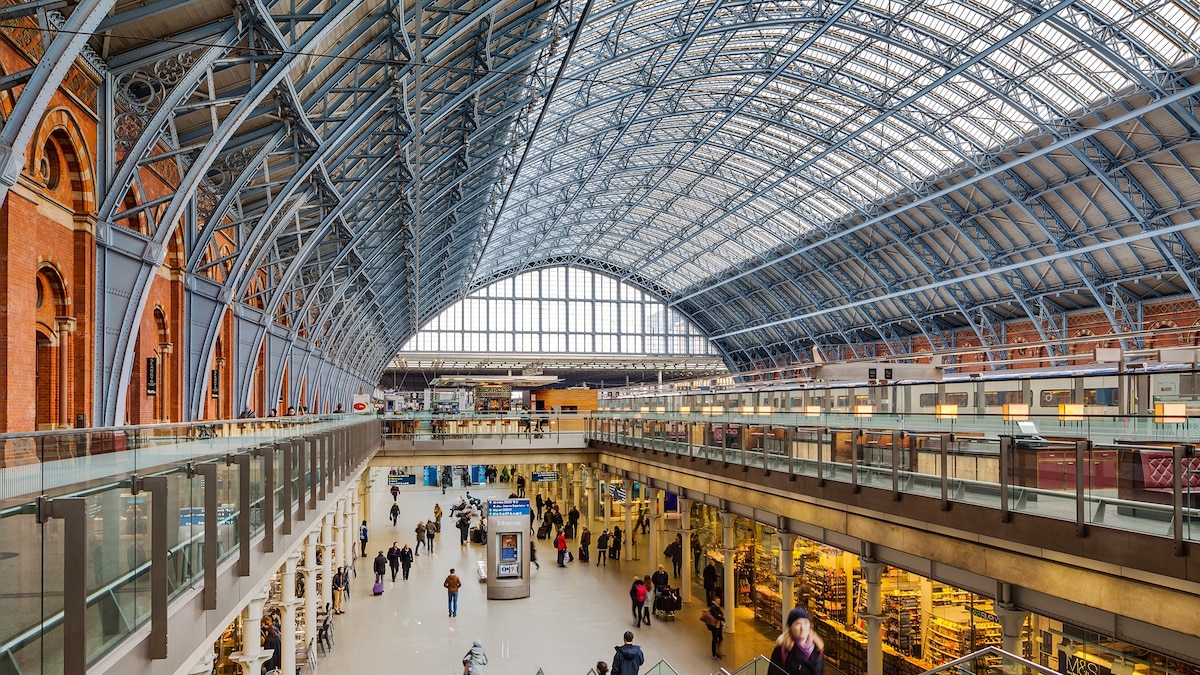Now Reading: Here’s why Eurostar’s new rivals are good news for travelers
-
01
Here’s why Eurostar’s new rivals are good news for travelers
Here’s why Eurostar’s new rivals are good news for travelers

This story was produced by National Geographic Traveller (UK).
Passengers travelling to Europe by rail could see a raft of new train operators in the coming years. Eurostar — which has always had a monopoly on services between London and Paris, Brussels and Amsterdam — now faces the biggest threat of competition since it launched its first train through the Channel Tunnel in 1994. With the promise of more choice and lower prices, could this be good news for travellers?
What’s the latest?
A handful of companies are vying for access to HS1 — the high-speed line between London and Folkestone — including Virgin Trains and Spanish start-up Evolyn in partnership with Italy’s FS Italiane Group. Virgin is preparing to order a dozen high-speed trains to run through the tunnel. In March, UK start-up Gemini Trains announced it had applied for a train operator’s licence and access to the tracks through the Channel Tunnel. It believes it could launch services in 2029, as do Virgin and FS Italiane Group/Evolyn.
Why the sudden competition?
Cross-channel rail travel has bounced back significantly since the pandemic, in part because of the surge in popularity of rail holidays prompted by environmental concerns. Eurostar recorded its best year in 2024, carrying 19.5 million passengers in total. The cross-Channel routes saw the biggest increases, with London-Paris up 280,000 and London-Brussels up 250,000.
In January, the Office for Rail and Road (ORR), the regulator, also forced HS1 to cut charges for using the track from London to the Channel Tunnel in a bid to attract more operators to the route. All of this makes the prospect of more services attractive. “The high-speed line connecting London and the Continent through the Channel Tunnel is one of the great rail routes,” says Adrian Quine, chief executive of Gemini Trains.
Is there room for such expansion?
London St Pancras Highspeed (LSPH), the company responsible for the London station and the high-speed track to Folkestone, has drawn up plans to triple capacity at the notoriously congested station. This would allow it to expand the international departure area and accommodate up to 5,000 passengers an hour — an increase from 1,800 an hour.
In February, LSPH and Getlink, the French operator of the Channel Tunnel, agreed to work together to “grow international rail connectivity between the UK and Europe”. Getlink has been vocal in promoting the fact there’s plenty of spare capacity in the tunnels. In late 2023, its designers forecast that traffic would double over the following 10 years.
What could it mean for travellers?
The ultimate prize would be more destination choice and, with greater competition on existing routes, cheaper fares. Getlink hopes to see direct passenger services to Frankfurt, Cologne, Geneva and Zurich. Eventually, services could reach as far as Milan.
Yann Leriche, chief executive of Getlink, says, “We’re keen to drive forward attractive opportunities for low-carbon [travel] with a range of new destinations in Germany, Switzerland and France.”
Ministers have said that competition on the line would “bring prices down”. They highlighted the effects of competition on the East Coast Main Line, where challenger operators like Lumo have driven down fares and increased passenger numbers.
What are the hurdles?
Any new operator would need permission to run on both sides of the Channel. Post Brexit, the process of obtaining clearance is more bureaucratic. Eurostar is also nervous that new entrants will hamper its plans to carry 30 million passengers by 2030. A row has erupted over access to the only UK rail maintenance depot on the high-speed route, which it says is at full capacity.
The claim was dismissed in March by the ORR, which said that two of the depot’s eight maintenance lanes are underused and could be allocated to the rival companies. Eurostar dismissed the regulator’s report findings. It says, “The options presented in the report could help create some capacity, but this wouldn’t be enough to accommodate the stated ambitions of any single operator.”
The hope is that the hurdles can be overcome. The results could be good news for travellers hoping to switch to rail — but it might be a long time coming.
Published in the June 2025 issue of National Geographic Traveller (UK).
To subscribe to National Geographic Traveller (UK) magazine click here. (Available in select countries only).























